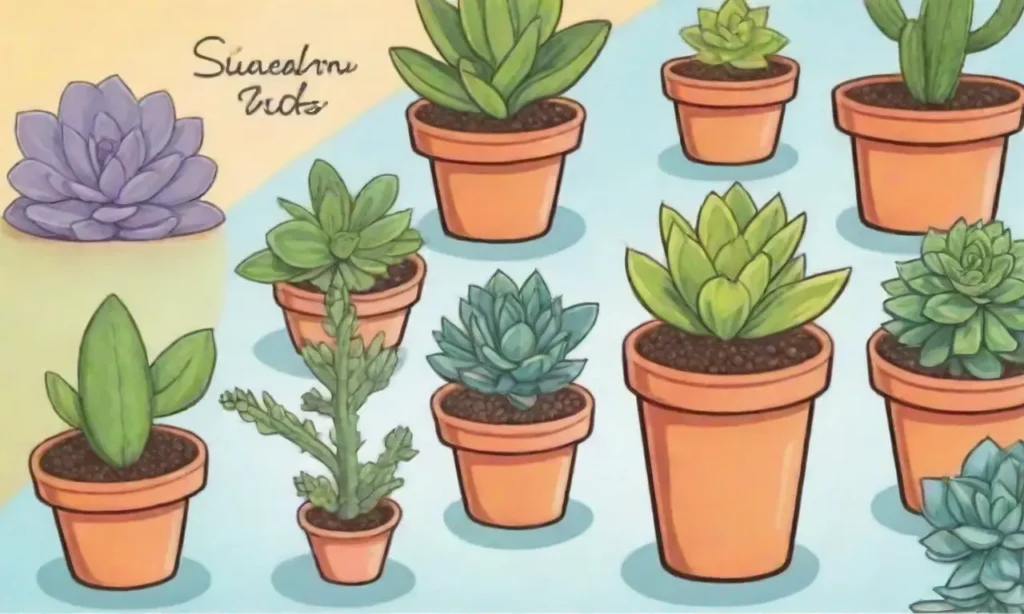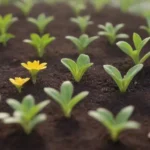Step-by-Step Instructions for Propagating Succulents in Water

Introduction
Succulent plants have gained immense popularity among plant enthusiasts and casual gardeners alike, thanks to their striking appearance and easy care. These water-storing plants come in a variety of shapes, sizes, and colors, which makes them a favorite choice for indoor decor and landscaping. Additionally, propagation is an exciting and rewarding aspect of succulent care, allowing you to create new plants from existing ones. In this article, we'll delve into the delightful process of propagating succulents in water, exploring the steps involved, the necessary tools and materials, and the best practices to ensure success.
In the coming sections, we'll provide you with detailed, step-by-step instructions for propagating succulents in water. We’ll cover everything from selecting the right succulent to the care of your new plants as they grow. Whether you are a seasoned plant parent or a beginner, this guide will help you navigate the world of succulent propagation with confidence and ease.
Understanding Succulent Propagation
Succulent propagation can be achieved through various methods including leaf cuttings, offsets, and seeds, but water propagation is particularly popular due to its simplicity. Water propagation is a method where cuttings of a succulent are placed in water to promote root development before eventually transferring them into soil. The process not only provides visual appeal as you observe the roots forming but also serves as a testament to the magic of plant growth.
Why Choose Water Propagation?
There are several compelling reasons to consider water propagation for your succulents. Firstly, it is an efficient method that requires minimal supplies, making it an accessible option for many plant lovers. Secondly, observing the root growth in clear water containers can be incredibly satisfying, as you can monitor their progress closely. Moreover, this method minimizes the chance of mold and rot commonly associated with soil propagation, as water is easier to regulate and allows for visual inspections. Lastly, once the roots are established, transferring your succulents to soil is a simple transition that often results in a healthy plant.
Essential Tools and Materials
Before commencing the propagation process, it's crucial to gather the necessary materials. Here is a checklist to guide you:
- Succulent Cuttings: Ensure the plant is healthy and disease-free.
- Clean Water: Use distilled or rainwater if possible, as tap water can contain chemicals that may harm the plants.
- Transparent Containers: Glass jars or bottles work well for visibility.
- Scissors or Sharp Knife: Use sterilized tools to prevent the introduction of pathogens.
- Well-Draining Soil: For when you transplant the rooted cuttings.
With these materials at hand, you are well-equipped to start your succulent propagation journey.
Step-by-Step Instructions for Water Propagation
Step 1: Selecting and Cutting the Succulent
The first step in propagating succulents in water involves selecting the right part of a mature plant. Look for healthy, plump leaves or sections of the stem. Some popular succulent species that propagate well in water include Jade Plant (Crassula ovata), Echeveria, and Aloe Vera. Once you’ve chosen your plant, it's time for harvesting.
 Understanding the Role of Humidity in Succulent Propagation
Understanding the Role of Humidity in Succulent PropagationUsing your sterilized scissors or knife, gently cut a leaf or a stem about 2-4 inches long. If you’re using a stem, it’s advisable to include a couple of leaves near the cut. Make sure the cut is clean and not ragged, as a clean cut promotes quicker healing, subsequently reducing the risk of issues like rot.
Step 2: Allowing the Cuttings to Callous
After making your cut, it’s essential to allow the cuttings to callous over. This process protects the newly exposed surfaces from infections and improves your chances of successful rooting. Place the cuttings on a clean, dry surface for 2-3 days in a shaded area, avoiding direct sunlight. You’ll notice the cut edges will begin to dry out and harden, signaling they are ready for propagation.
Step 3: Placing Cuttings in Water
Once your cuttings have calloused, it’s time to place them in the water. Ensure that only the cut end (not the entire leaf or stem) is submerged in the water. This allows for the development of roots while preventing the leaves from rotting. It's important to use clean water; change it every few days to maintain freshness and aeration, crucial for healthy root growth.
Step 4: Providing the Right Environment
Having the right environment is key to successful propagation. Place your water container in a warm, well-lit area, but avoid direct sunlight that could overheat the water or scorch the developing leaves. A temperature range of 65°F to 75°F (18°C to 24°C) is ideal for growth. Over the next few weeks, be patient and monitor the cuttings for progress.
Step 5: Observing Root Development
Patience is vital in the propagation process. Typically, you will start to see roots developing within 2 to 4 weeks. As roots form, they can range from a few inches to densely-packed tendrils. During this time, keep an eye on the water level and quality. If a cutting appears to be growing well, wait until the roots are about 2-3 inches long before moving to the next stage.
Transplanting to Soil

Step 1: Choosing the Right Soil
Once your succulent cuttings have developed strong roots, it’s essential to provide them with the right growing medium. A well-draining succulent or cactus soil is optimal, as it prevents water retention around the roots, which can lead to rot. If making your own mixture, consider combining potting soil with perlite or sand to promote drainage.
 Strategies for Growing Succulents from Seed: A Complete Guide
Strategies for Growing Succulents from Seed: A Complete GuideStep 2: Preparing the Pots
Select pots with drainage holes to allow excess water to escape, preventing sogginess. Fill the pots with the well-draining soil mixture, leaving enough space for the roots of your succulents. Make a small hole in the center of the soil for each cutting to provide an optimal environment for them to settle comfortably.
Step 3: Transplanting Your Cuttings
When transferring your rooted cuttings, gently remove them from the water. It’s advisable to do this with care to avoid damaging the delicate roots. Place each cutting into the prepared hole in the soil, lightly pressing the soil around it to secure it in place. Water the newly planted cuttings lightly, ensuring that the soil is moist but not waterlogged. Place the pots back in a well-lit location to promote growth.
Caring for Newly Planted Succulents
Establishing a Watering Schedule
Once your cuttings are transplanted, establishing a watering schedule is important. Wait about a week before watering again, allowing the roots to acclimate to their new environment. Then, when you do water, be sure to do so thoroughly, soaking the soil until water begins to drain from the bottom. Afterward, allow the soil to dry out completely before the next watering. This routine mimics natural rainfall patterns that succulent plants thrive in.
Fertilizing Your Succulents
After about 4-6 weeks of growth in soil, consider adding a diluted liquid fertilizer specifically designed for succulent plants. This provides essential nutrients to sustain healthy growth. Apply it according to product instructions, generally during the growing season, which typically spans from spring through early fall.
Monitoring Light Conditions
Ensure that your newly transplanted succulents receive adequate light, as the right amount of sunlight helps establish growth. A bright, indirect light environment is perfect, especially during the initial growth phase. Gradually, you may introduce them to more direct sunlight, but be cautious of sunburned leaves by keeping an eye on their appearance.
Conclusion
Propagating succulents in water is both an enjoyable and fulfilling activity that not only enhances your plant collection but can also be a wonderful project for families or friends. With the right approach, anyone can engage in this friendly and satisfying hobby, watching as new life unfolds before their eyes. By selecting healthy cuttings, providing a nurturing environment, and being patient, you can significantly increase your chances of successful propagation.
In summary, remember that the process is as rewarding as the end result. The joy of seeing freshly propagated roots extending from cuttings is a captivating experience. Ultimately, each new succulent can serve as a reminder of personal growth and nurturing—a reflection of our journey through life.
 Growth Conditions: Temperature, Light, and Moisture for Success
Growth Conditions: Temperature, Light, and Moisture for SuccessWhether you are looking to expand your collection, give plants as gifts, or simply bring some greenery into your space, water propagation opens up a world of possibilities. So gather your supplies, pick your favorite succulents, and embark on your propagation journey today! Happy planting!
If you want to read more articles similar to Step-by-Step Instructions for Propagating Succulents in Water, you can visit the Propagation Methods category.
